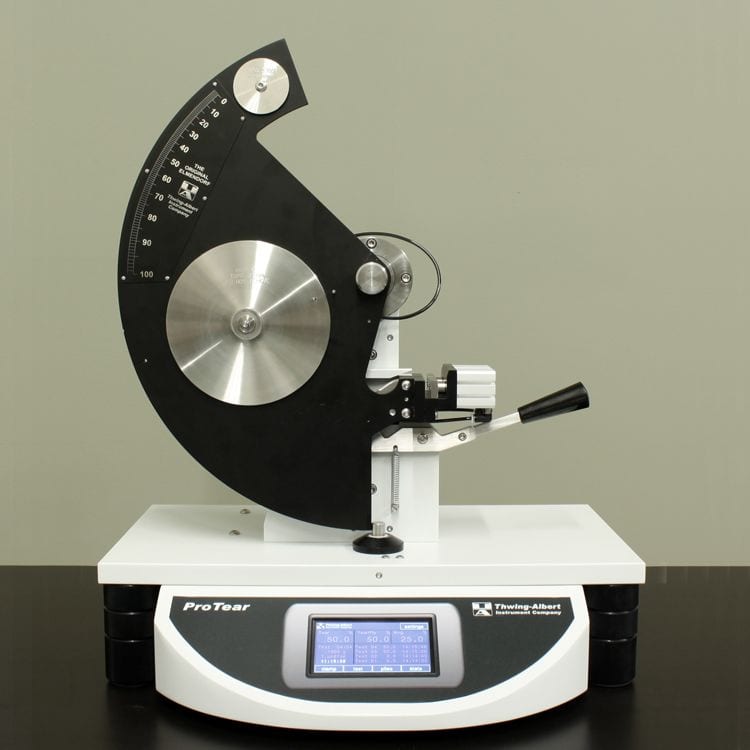We’re here to help
Let us help you
Elmendorf Electronic ProTear, Internal Tear Tester

Enjoy the reliability of the Elmendorf ProTear Tester. The Tear Tester offers the convenience of a user-friendly instrument that gives you more information quicker and easier than other devices. This tear tester makes tear testing a very easy test to perform.
With over 90 years’ experience as the original manufacturer of the Elmendorf design, Thwing-Albert tear testers are recognised as the standard worldwide. Based on the classic design, the ProTear tear tester combines proven reliability with advanced electronics to provide complete control over your tests and deliver an unparalleled range and quality of data.
Adheres to: ASTM D295, ASTM D752, ASTM D4247, ASTM D1424, ASTM D1922
TAPPI T414, T496
ISO 1974, ISO 9290
**You want your test results to fall between 20% and 80% of your pendulum capacity. For example, if you are using a 1600 gram pendulum, you should expect to get tear results between 1280 grams and 320 grams**
The electronic model provides several enhancements over the mechanical model. All test results and statistics are calculated automatically and displayed on the built-in screen. An RS-232 port enables test results to be transmitted to a printer or computer.
Precision and accuracy are increased as pendulum movement is monitored by a digital encoder.
Ergonomically designed for ease of operation and conservation of laboratory space, the ProTear Electronic Model incorporates both mechanics and electronics into a single footprint design.
Other standard features of the electronic model include air-actuated pendulum release and sample clamps, microcomputer-assisted pendulum balancing and a membrane switch display panel.
The control panel provides one-touch clamping and test capabilities. Other functions include data entry of sample information such as sample ID, thickness, basis weight, sample direction and number of plies being torn. The “Units” key enables the simple configuration of result units.
The operation of the ProTear is easy —simply secure the sample in the two clamps, make an initial tear with the attached blade and release the pendulum. The tearing resistance of the material is measured via the transference of the potential energy stored in the raised pendulum to kinetic energy. A portion of this energy is absorbed during the tearing of the sample and is used as a measure of the materials resistance to a continuing tear. The energy required to tear the sample is reported as a percentage of the pendulum capacity or force.
The ProTear’s standard menu-driven software provides total control over test parameters and reports test data seconds after test completion.
An optional data acquisition software program installs quickly and is easily configured with user-friendly drop-down menus. It provides the ability to capture serial data, customize it for specific requirements and then transfer it to other applications such as Excel™ and Access™. Use the capabilities of these applications to create graphs and reports that automatically update with real-time data.
Let us help you